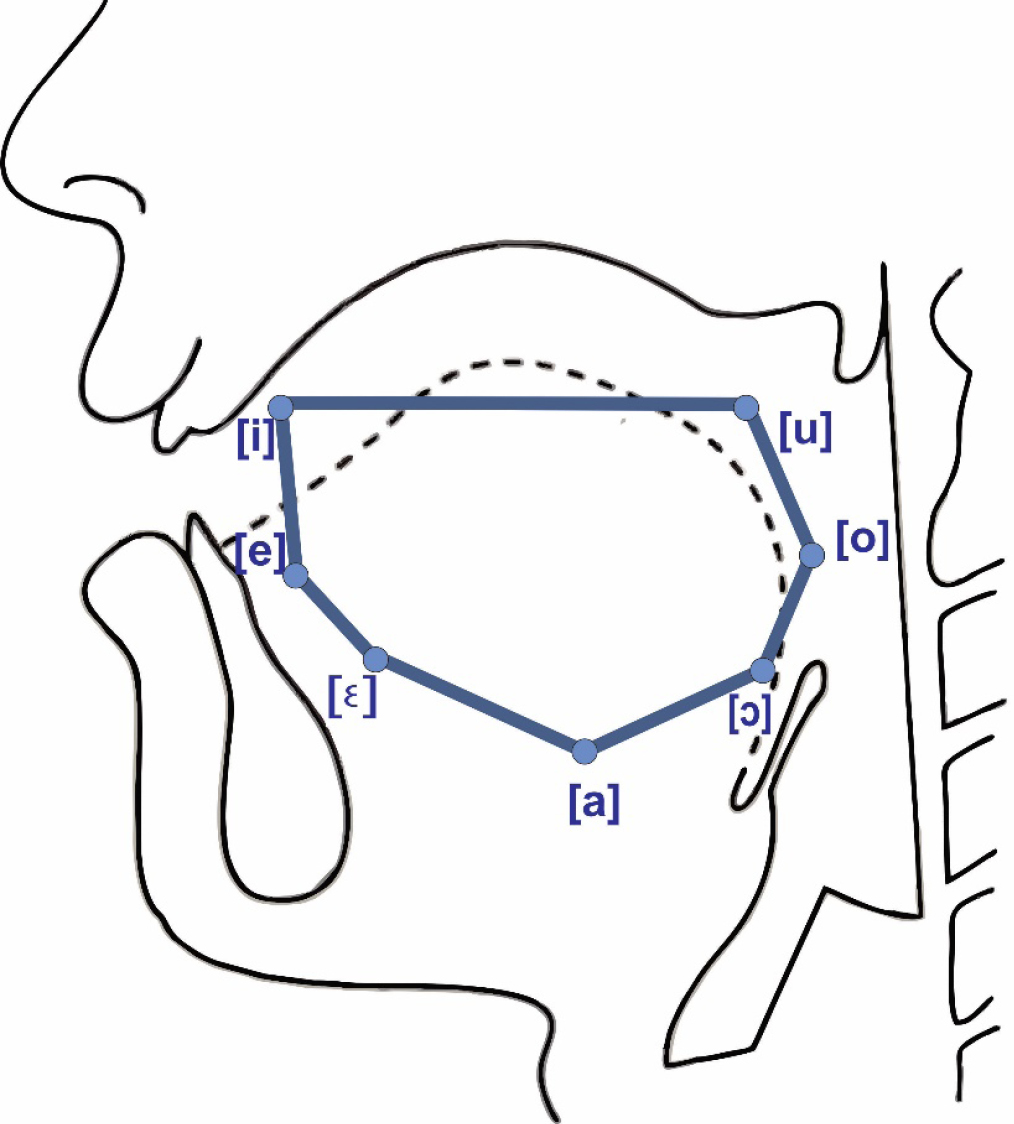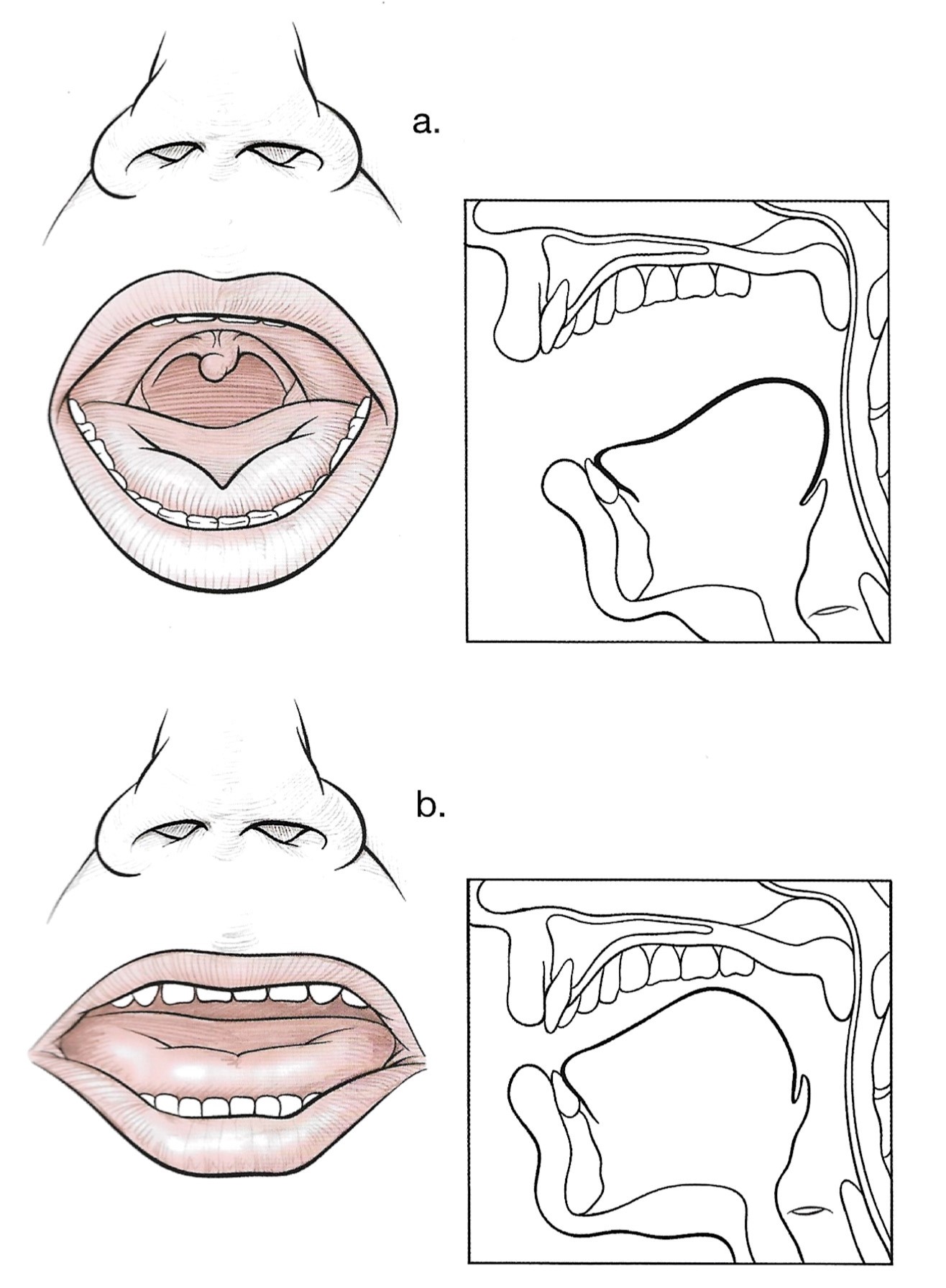Na fala não precisamos de tanto espaço na boca como no Canto. Ao baixar o queixo a garganta fica relaxada e aberta permitindo o som viajar para as cavidades de ressonância. Com este espaço na garganta conseguimos também arquear o palato mole, movimento essencial para o registo médio e de cabeça. No fundo, ao alongar o queixo de forma relaxada iremos obter um grande conforto e facilidade na emissão do som.

“The jaw is attached to the skull right beneath the temples in front of the ears. By placing your two fingers there and dropping the jaw you will find that the space between the skull and jaw grows as the jaw drops.
In singing this space must be as wide as is possible, for that indicates that the jaw is dropped down, giving its aid to the opening at the back of the throat. It will help the beginner sometimes to do simple relaxing exercises, feeling the jaw drop with the fingers. It must drop down, and it is not necessary to open the mouth wide, because the jaw is relaxed to its utmost.”
Para alongar o queixo temos que ter uma boa postura, coluna alinhada e atenção à posição da cabeça, principalmente quando estamos a cantar notas agudas. No registo médio e de cabeça temos tendência a elevar a cabeça, trancando assim o maxilar não permitindo a abertura de queixo necessária à emissão dessas notas e forçando os vários músculos responsáveis por alongar o queixo e permitir espaço na boca e garganta.

“Allowing the jaw to open freely is unfamiliar to many voice users, who habitually tighten and retract the jaw.”
De notar que às vezes temos o queixo para baixo, no entanto não abrimos muito a boca. Este fator depende da vogal que estamos a suster, como por exemplo no caso do (o), usamos os músculos faciais para moldar. Estes músculos também são os responsáveis pelas nossas expressões faciais.

“Now, a singer can never allow the facial expression to alter the position of the jaw or mouth. Facial expression for the singer must concern itself chiefly with the eyes and forehead.
The mouth must remain the same, and the jaw must ever be relaxed, where the song is one of deep intensity or a merely scale of laughter.”

Os músculos do queixo presos ao osso hioide elevam a laringe. Estes também são responsáveis por empurrar os alimentos, quando está a engolir. Alguns cantores exercem uma força excessiva nestes músculos e consequentemente elevam a laringe.
“These muscles perform two critical functions. First, they depressor open the lower jaw; second, they elevate the hyoid bone and draw the hyoid bone and tongue forward during swallowing. Geniohyoid and mylohoid are false elevators of the larynx; the tendency to overuse these muscles canoften be detected in popular singers who appear to have a kind of double chin from overworking these muscles.”
Alguns métodos defendem que subir a laringe facilita a emissão de notas agudas. Eu sou a favor do método de manter a laringe numa posição neutra.









